Last updated: March 8, 2025
Article
Tracking a Flu Strain That’s Killing Wild Birds
When confronted with a seemingly uncontrollable disease, surveillance matters. National parks are important watchdogs in the search to know more.
By Lisa Shender, Lori Oberhofer, Ryan Trimbath, Alacia Welch, Olivia Magni, Leslie Frattaroli, and David Payer
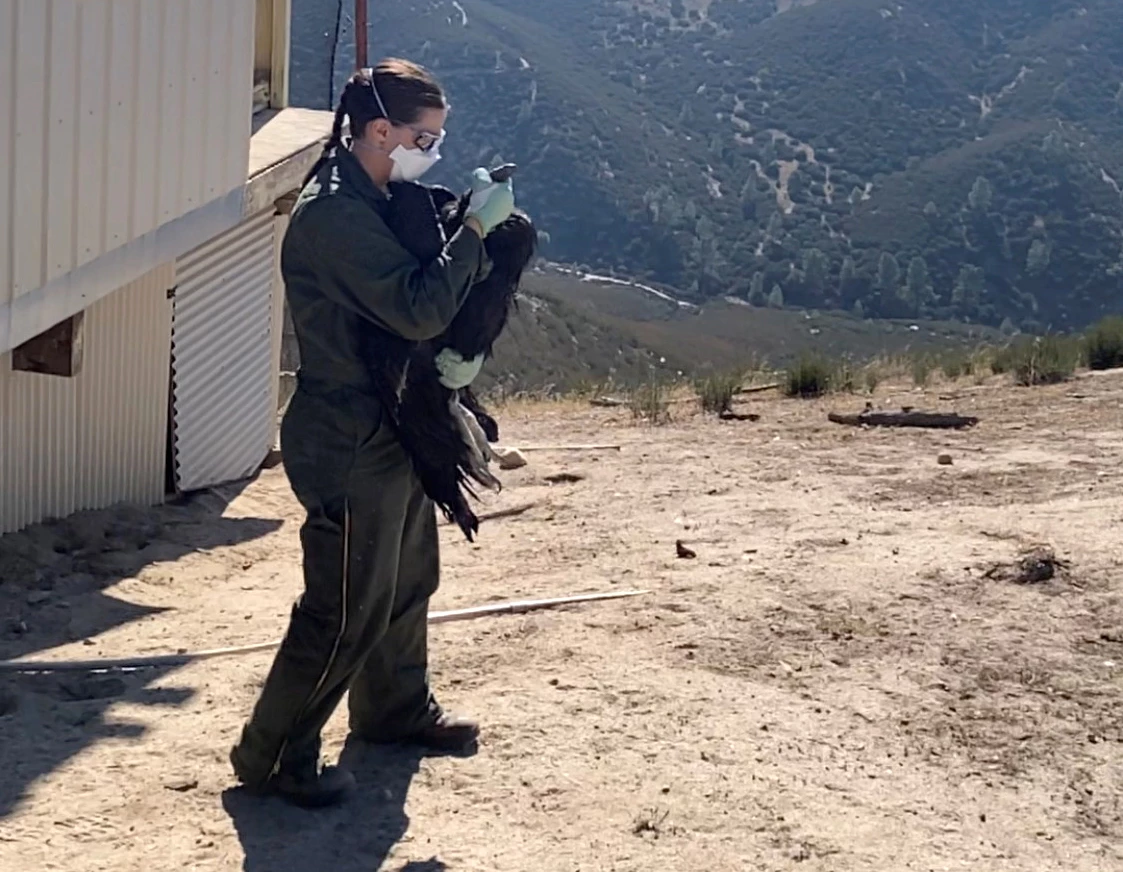
Image credit: NPS / Rose Fielding
In late 2021, a virulent Eurasian strain of avian influenza virus, also known as bird flu, was introduced into North America.
It was detected in chickens and a wild gull in Canada. The virus can impair a bird’s nervous system, making it unable to fly and ultimately killing it. National Park Service biologists across the country are helping with disease surveillance, entering their observations into nationwide databases. This information can be used to understand the disease's progression and how it's affecting wild birds. It can also help secure funding for further research.
Wild birds are frequently infected with avian influenza viruses, but this new strain is classified as “highly pathogenic.” Highly pathogenic avian influenza (HPAI) viruses quickly kill domestic poultry, so the disease has economic consequences for the U.S. poultry industry. There are multiple strains of HPAI viruses, which are generally considered zoonotic—transmissible to people. Fortunately, human infections with the recently introduced strain are exceedingly rare, so this strain is a low risk to most people. But because viruses can change over time, it is always wise to take precautions to avoid exposure.
Wild birds haven’t been so lucky. This strain is responsible for the deaths of tens of thousands of wild birds of many species in multiple European and Asian countries. Once it arrived in North America, the virus spread from northeastern Canada down the Atlantic Flyway and westwards across the United States. As it did, it became clear to avian scientists that some species of birds, like the bald eagle—our national bird and symbol—were more susceptible to fatal infections.
Sitka’s Fight to Save a National Symbol
On the brink of extinction in the 1960s, multiple conservation efforts and protections led to the successful recovery of the bald eagle population in the United States. Bald eagles are revered by most Native American tribes and play an important role in cultural traditions and religious ceremonies. This majestic bird was selected as a national symbol of the United States in 1782, and it is considered emblematic of our country’s strength and freedom.
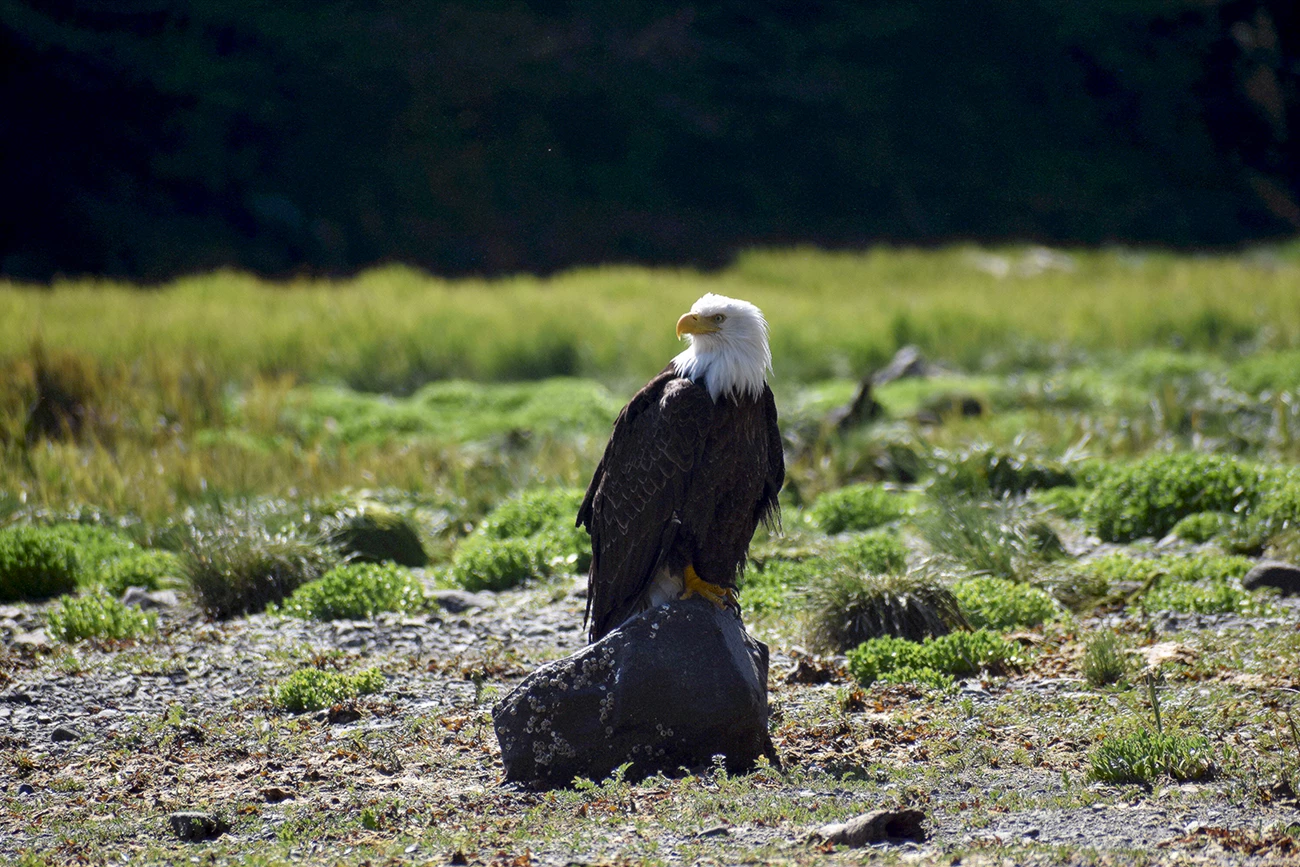
Image credit: NPS / Olivia Magni
The bald eagle is an apex predator, meaning that it is at the top of the food chain and has no natural predators of its own. Although bald eagles occasionally consume small mammals like rabbits, they primarily eat fish and waterfowl. It doesn’t matter to the eagle whether its prey birds are healthy, sick, or even recently deceased. Consuming sick birds, or those that have recently died from disease, make bald eagles more likely to get avian influenza.
Affected eagles walked in circles, moved their heads with an uncontrollable, jerky motion, and held their necks in an unnatural position.
Located on Baranof Island in Southeast Alaska, Sitka National Historical Park has many bald eagles. They are part of the park’s diverse and abundant wild bird population. The park is near the town’s business district. Residents like to stroll in the park at lunchtime or enjoy a sunset mirrored in the shallow waters of a low tide. In the spring of 2022, when bald eagles in the park began to appear ill, people took notice.
Affected eagles walked in circles, moved their heads with an uncontrollable, jerky motion, and held their necks in an unnatural position. Eventually, the birds remained grounded, unable to take flight, and died within 48 hours. At least three adult eagles in the national park succumbed to the disease. This coincided with spring migration, which brings a seasonal influx of waterfowl to the park.
The Alaska Raptor Center is a rehabilitation facility adjacent to Sitka National Historical Park. During spring and summer 2022, the center responded to calls about sick eagles in Sitka. Jennifer Cedarleaf, the center’s director, knows that once raptors get infected with HPAI, they will most likely die, so prevention is the best strategy. As Cedarleaf says, “We’re doing everything we can to protect them from getting infected.”
Staff at the raptor center and biologists at the park coordinate with state officials to submit tissue samples from sick and deceased eagles for avian influenza testing. But when staff members discover eagles in an advanced state of decomposition, testing is often not possible.
Vigilance in the Everglades
Birds die of natural causes like starvation, disease, and predation, or from things like colliding with vehicles. The occasional removal and disposal of bird carcasses can thus be a necessary part of a park biologist’s job. When faced with a single dead bird, collection and disposal is relatively simple. But the job becomes much more difficult when dealing with a large number of carcasses. This is especially true when a zoonotic disease like HPAI is the suspected cause of death. Such was the case for biologists at Everglades National Park.
The park, which is in south Florida, is the largest subtropical wilderness in the country. It is famous for its unique plants and animals. Huge populations of resident and migratory turkey vultures and black vultures are among the more than 360 different species of birds seen in the park. While out on routine patrol on March 30, 2022, a park law enforcement ranger found at least 20 dead vultures at the Chekika day use area, the park’s eastern access point. Park biologists Lori Oberhofer and Raul Urgelles knew that HPAI had already been found in vultures in more northern regions of Florida. So they prepared to visit the site the next morning.
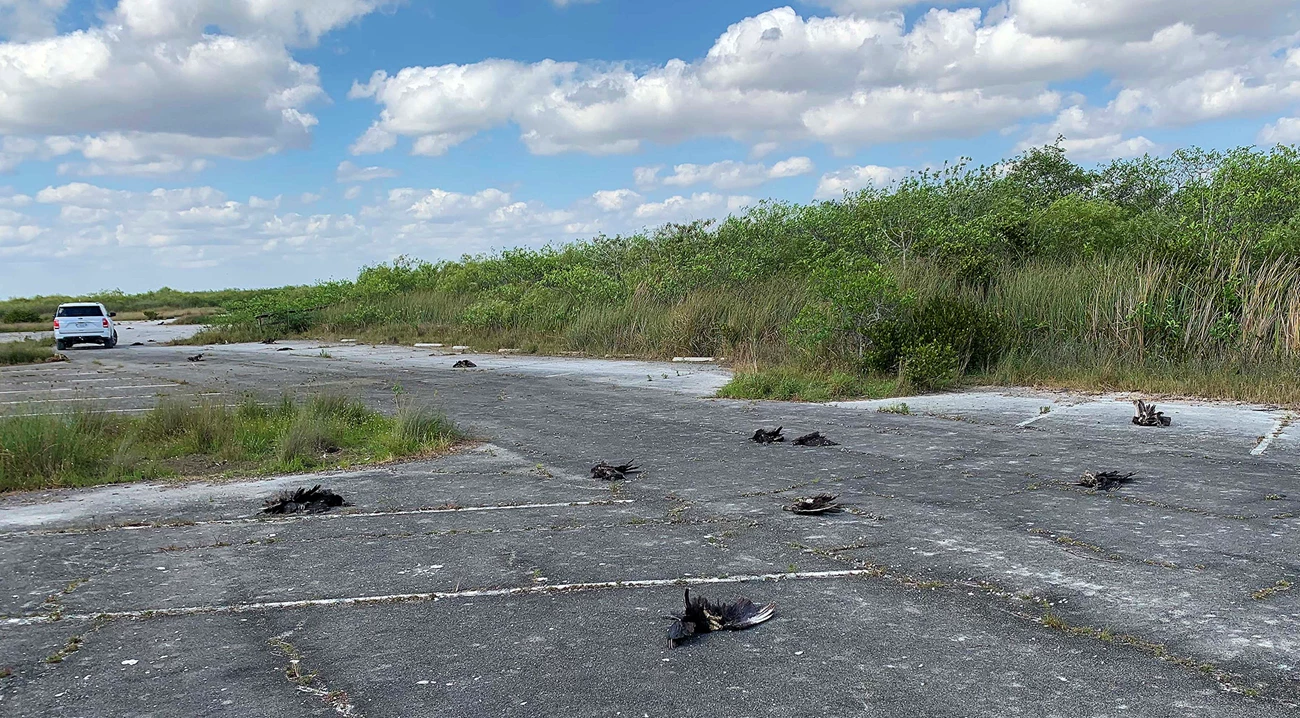
Image credit: NPS / Jeffrey Gonzalez
When they arrived, despite the sweltering 90-degree temperature, Oberhafer and Urgelles donned full protective gear to safeguard from infection. This meant Tyvek suits, eye goggles, N95 masks, nitrile gloves, and plastic shoe covers. They saw many dead black vultures scattered across the paved parking area and in the adjacent vegetation. Vultures roosted in the surrounding trees while others scavenged on the dead birds on the ground. Two obviously ill birds walked away slowly and disappeared into the impenetrable vegetation beneath the trees.
The biologists collected one fresh vulture carcass for laboratory evaluation and 65 others for disposal. Staff at the Miami-Dade County landfill were waiting and ready to receive the carcasses at a designated animal burial pit. Landfill staff immediately covered the bagged birds with soil to prevent other scavengers from eating them and possibly becoming infected. Laboratory testing revealed that the fresh vulture carcass was positive for HPAI.
"Despite removing or burying close to 200 carcasses over three weeks, the mortalities continued.”
After Chekika, park biologists realized it would be impossible to locate and remove all carcasses or sick birds across an area as large as Everglades. Dr. Mark Cunningham is the diagnostic veterinarian manager at the Florida Fish and Wildlife Conservation Commission. He participated in a vulture roost study at Hontoon Island State Park north of the Everglades. "Despite removing or burying close to 200 carcasses over three weeks, the mortalities continued,” he said. “Some of the pitfalls we ran into were the difficulty in finding every carcass—there are always some that we miss—and they fact that sick birds were dying continuously.”
Dr. Cunningham said it would be necessary to have someone at the roost throughout the day to remove carcasses. “At this point, I don’t believe carcass removal will be effective without complete removal of all carcasses daily, multiple times per day, for several weeks,” he added. “Sick vultures can use different roost sites, creating other outbreaks nearby."
Park biologists at Everglades are concerned this disease might affect other bird species in the park, but they know protecting birds from HPAI in such a huge park is not feasible. Wading bird nesting colonies of egrets, herons, wood storks, and roseate spoonbills are magnets for vultures, who prey on both live and dead nestlings. Infected vultures likely congregate among wading bird colonies. For now, the park remains vigilant for new outbreaks.
A Beloved Cuyahoga Valley Bird Succumbs
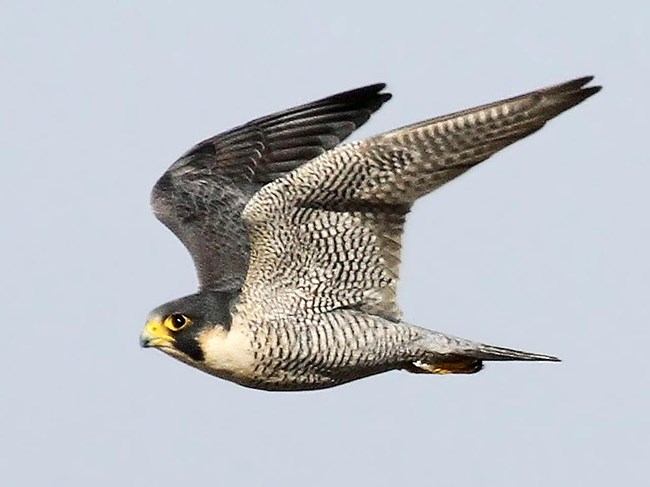
Image credit: Macaulay Library, CLO, Ryan Schain
Vigilantly observing bird behavior is a common practice for Chad and Chris Saladin. The Saladins are volunteers at Cuyahoga Valley National Park, just south of Cleveland, Ohio. They enthusiastically watch over peregrine falcons, year-round feathered residents in Cuyahoga Valley. Peregrine falcons like sheer cliffs as natural nesting sites, but there are none in the park. So peregrine falcons in the region nest on large bridges such as where Interstate-80 crosses over the Cuyahoga River.
In spring 2022, the Saladins and other park birders were excited to see that a peregrine falcon had successfully selected a nest site on the Brecksville-Northfield Bridge. Previous nest attempts by other falcons at this site had failed due to the design of the bridge’s arched supports, which provide few flat, protected areas for nesting.
Because they are a long-lived and beloved species, peregrine falcons are given names when they are captured and banded. State and federal agencies then track the falcons with the assistance of committed volunteers. They do this to document how successful the falcons are at breeding, which helps in species conservation efforts.
As volunteers cheered them on, Zeal and her mate, “Zen,” began incubating their eggs in April 2022. This was something no previous peregrine falcon pairs in this area had done successfully.
The new arrival at Cuyahoga Valley was a bird named “Zeal.” She was banded in 2019 at the Holiday Beach Migration Observatory in Ontario, Canada. As volunteers cheered them on, Zeal and her mate “Zen” began incubating their eggs in April 2022. This was something no previous peregrine falcon pairs in this area had done successfully. But later that month, on April 21st, a park patron who was a birder alerted park staff that Zeal was grounded and showing signs of neurological impairment. Zeal was contained in an animal carrier while Zen sat on the eggs and watched from above. After being transported to a local veterinary hospital, Zeal began to have seizures and was humanely euthanized.
Park biologist Ryan Trimbath knew that avian influenza had been documented near Cuyahoga Valley National Park within Cuyahoga County. Although he suspected that HPAI was the cause of death, he wanted laboratory confirmation. Volunteers saw Zeal and Zen carrying and feasting on different prey, including waterfowl, which could have been the source of HPAI transmission. Trimbath shipped Zeal’s body to the National Park Service Biological Resource Division’s Wildlife Health Branch. Through a contract with the Colorado State University Veterinary Diagnostic Laboratory, Wildlife Health confirmed that Zeal was infected with HPAI virus.
In Zeal’s case, seizures and other neurological signs, along with the positive HPAI detection, made it easy to conclude she was sick from the avian influenza virus. But it can be more difficult to interpret the significance of an HPAI infection. Waterfowl are frequently infected with a variety of avian influenza virus strains. Depending on the species and other factors, these waterfowl may appear clinically healthy, even when infected.
An Incidental Finding at National Mall and Memorial Parks
More than 32 million visitors visit the National Mall and Memorial Parks in Washington DC annually. The Lincoln Memorial Reflecting Pool is an iconic feature in the park that provides habitat for urban mallard ducks. Female mallards make their way from areas all over the city, crossing thoroughfares, to raise their broods at the Reflecting Pool and the adjacent Constitution Gardens Lake.
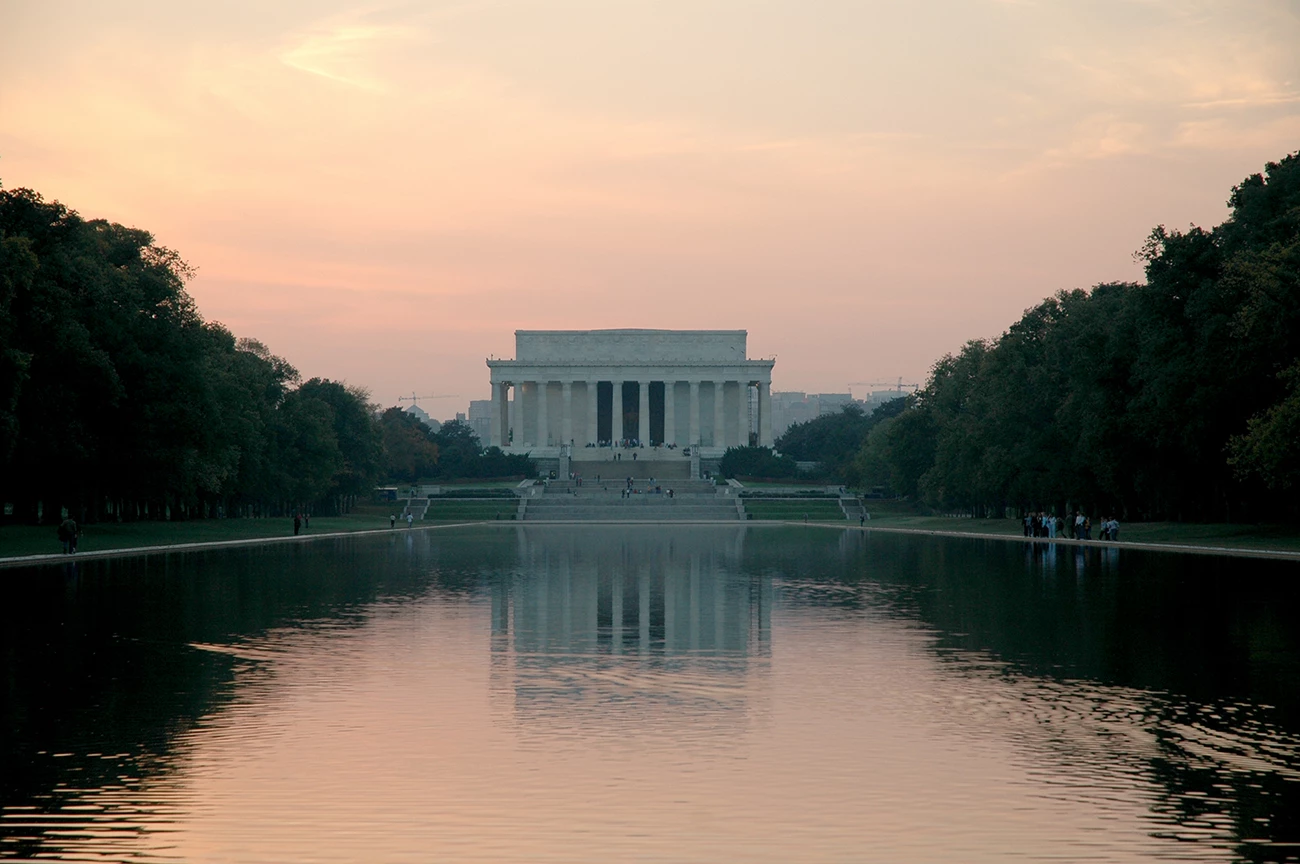
Image credit: NPS / Terry Adams
This urban mallard population is large. When they congregate in a minimally aerated, artificial body of water, they create conditions that can promote disease transmission. Mallard duckling die-offs at the Reflecting Pool occurred in 2017, 2020, and 2021, prior to the introduction of the current HPAI virus. But in these previous events, parasitic infections were identified as the cause of death.
The park wanted people to know that the virus was present but not a significant risk to their health.
Given the Reflecting Pool’s history, park biologist Leslie Frattaroli was not surprised when she got a report of 14 dead mallard ducklings on May 25, 2022. Frattaroli submitted two of the dead ducklings to the United States Geological Survey, National Wildlife Health Center. As in previous years, the ducklings were emaciated and infected with multiple types of intestinal parasites.
What was different this time, though, was that the HPAI virus was detected in both birds. This detection was an incidental finding—unlikely to be the primary cause of death—but it was obviously important. Park staff quickly coordinated with local state agencies, the National Wildlife Health Center, and veterinarians in the National Park Service’s Biological Resources Division to release a statement to the press. This was essential because of the ongoing COVID pandemic and National Mall and Memorial Park’s location in the heart of the Nation’s capital. The park wanted people to know that the virus was present but not a significant risk to their health.
Caring for an Ancient Species on the Brink at Pinnacles National Park
Although they used to call a vast area of North America home, the California condor is now one of the world’s rarest birds. Driven to the brink of extinction in the 1980s, this enormous bird has been around since the Pleistocene, about 40,000 years ago.
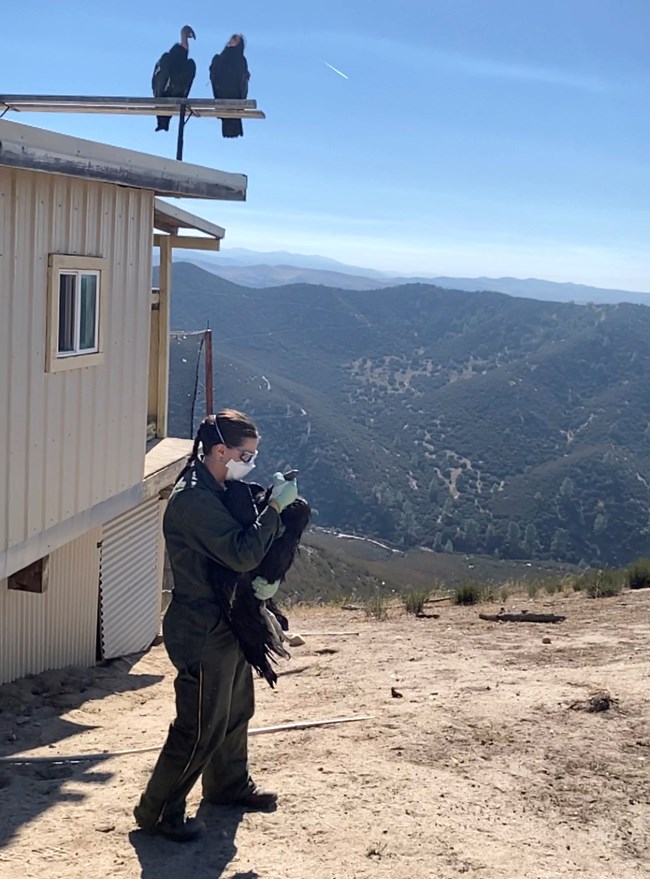
Image credit: NPS / Rose Fielding
In 1987, the U.S. Fish and Wildlife Service captured the last remaining California condor in the wild and placed hopes for recovery on a captive breeding program. The agency began releasing captively bred condors into the wild in 1992, and the population slowly increased. Today, there are more than 127 wild California condors flying free and 177 in captivity.
California condors are scavengers, and they regularly interact with turkey vultures while feeding on carrion. At the time of this writing, turkey vultures in at least six California counties had been detected with HPAI infections. Although the HPAI virus has not yet been documented in condors, these iconic birds have a flight range of thousands of square miles per year. This increases their likelihood of interacting with infected turkey vultures.
Members of the California Condor Recovery Program recognize the risk of HPAI virus transmission to condors. The health team created biosecurity—human and wildlife safety—protocols for all free-ranging condor release programs. These protocols are currently in place at Pinnacles. The condor program lead, Alacia Welch, and other park biologists monitor more than 85 individual condors in central California using radio and GPS transmitters. Every condor is trapped at least once a year for transmitter maintenance and to check on the bird’s health.
Condors often feed on carrion that contain spent lead ammunition. Their inadvertent ingestion of lead particles makes lead toxicity their primary cause of death. The threat to condors from acute lead poisoning is significant. For this reason, release programs cannot stop trapping and handling birds for evaluation and lead poisoning treatment.
The need to handle condors during the HPAI outbreak means that implementing practices to protect the birds and their human handlers is of utmost importance.
The need to handle condors during the HPAI outbreak means that implementing practices to protect the birds and their human handlers is of utmost importance. At Pinnacles National Park, biosecurity measures entail the use of personal protective equipment, analyzing job hazards, and adapting best practices to the specific needs of safely handling condors. Biologists at the park are prepared to balance the risk of HPAI exposure with effective condor population health management.
The Importance of Surveillance
These case studies give a glimpse of how the National Park Service is dealing with avian influenza. The agency works to ensure that staff members know about current outbreaks, how to respond, and where to submit dead birds for laboratory evaluation. The larger wildlife health community has much to learn from the current HPAI outbreak, so it’s important for parks to remain vigilant and assist with nationwide surveillance of the disease. The information we collect will help people make good decisions and take effective actions in this and future highly pathogenic bird flu outbreaks. You can learn more about the North American spread of avian influenza from the U.S. Geological Survey and U.S. Department of Agriculture websites.
About the authors

Lisa Shender is a wildlife veterinarian in the Biological Resources Division of the National Park Service. She works with parks across the nation to address wildlife health concerns. Image courtesy of Lisa Shender.

Lori Oberhofer is the lead wildlife biologist at Everglades National Park. Everglades staff members conduct long-term monitoring studies of colonial nesting wading birds, alligators, and imperiled species such as the Florida panther, wood stork, Cape Sable seaside sparrow, and Florida bonneted bat. Her team responds to wildlife disease and mortality events and other wildlife management needs. Image credit: NPS / Lori Oberhofer.

Ryan Trimbath is a biologist at Cuyahoga Valley National Park. He has worked for the last seven years on projects such as deer management and freshwater mussel reintroductions. Image credit: NPS / Ryan Trimbath.

Alacia Welch is the condor program manager at Pinnacles National Park. Alacia’s career began in the National Park Service at Pinnacles as a Student Conservation Association intern pulling invasive plants and restoring native plants. Over time, she shifted into wildlife management and then into the Condor Recovery Program, first as a field crew member, then crew leader, and now the program manager. She’s enjoyed getting to know every facet of this dynamic endangered species management program and continues to be thrilled every time condors fly overhead. Image credit: NPS / Joshua Carter.
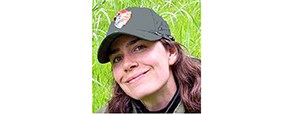
Olivia Magni is a biologist at Sitka National Historical Park. She graduated with distinction from American International University in 2018 with a bachelor of science in biology.

Natural Resources Program Manager Leslie Frattaroli works for National Mall and Memorial Parks in Washington DC. She has been with the National Park Service for almost 20 years. Leslie began her National Park Service career as an intern at Valley Forge National Historic Park. She has worked at Grand Teton National Park, Cape Hatteras National Seashore, and the National Capital Region. Image credit: NPS / Leslie Frattaroli.

David Payer is the regional wildlife biologist for the National Park Service in Region 11, Alaska. Since 1999, he has conducted and coordinated research on Arctic and Subarctic wildlife, with a focus on effects of climate change and anthropogenic stressors. Image courtesy of David Payer.
Tags
- cuyahoga valley national park
- everglades national park
- national mall and memorial parks
- pinnacles national park
- sitka national historical park
- birds
- disease
- animals
- lisa shender
- david payer
- features
- park science magazine
- park science journal
- ps v36 n2
- lori oberhofer
- ryan trimbath
- olivia magni
- alacia welch
- leslie frattaroli
